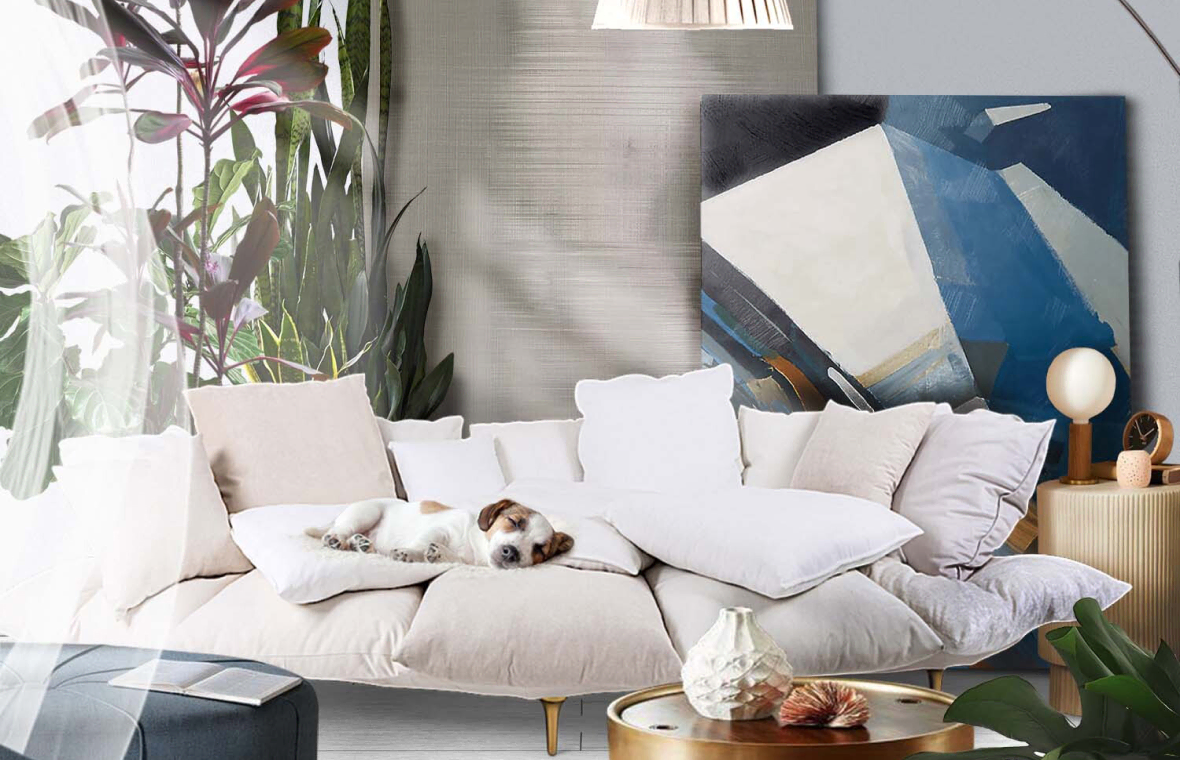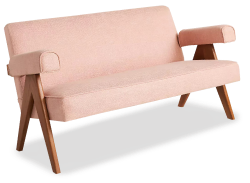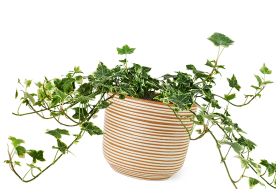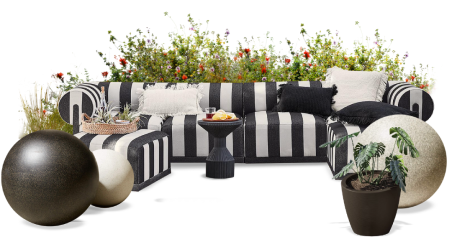How to Add Nature to Your Home: Best Indoor Plant & Biophilic Design Ideas
 by DecorMatters|updated Mar 13, 2025
by DecorMatters|updated Mar 13, 2025
Both homes and Instagram accounts these days are filled with exotic plants and luscious displays of greenery. Why? Not only is nature an effortlessly chic addition to any room, but it also comes with health benefits - it can help lower stress and act as a natural filter for allergens and airborne particles. Not to mention, with so many people working from home, watering and tending to plants can be a welcomed break in your daily routine.
Nature is so effective in interior design because it bridges the gap between the outdoors and indoors, helping lower feelings of claustrophobia. It's also perfect for filling awkward spaces and adding a sense of the wild to your place without being messy.
Here are three tips to add nature to your home:
Best Indoor Plants to Frame Your Space

Statement plants like Monstera or Fiddle Leaf Fig can help round out a room when placed in a corner, doorway, or window. Because they are such large plants, they give a room a tropical look but don't overshadow other intricate details nearby. If you prefer something smaller, opt for a medium plant with big leaves, like Canna. These can frame walkways just as well as statement plants, and look extra cute when potted in woven baskets that extend the 'earthy' style and don't contrast with existing elements of the space.
Bare wall spaces can also be given life (literally) by hanging plants on them, using free-flowing nature to give the illusion of texture. English Ivy and Boston Fern are social media favorites right now for this, due to their thick volumes and vibrant greens.
Over on shelves and bookcases, line up dainty plants like cacti, Jade plants, and Echeveria. Because they're all so versatile, you can combine the different species for an eclectic look that infuses some personality into often-ignored places. Glass terrariums are neat too, however, be careful not to overcrowd them on flat surfaces that can easily seem too 'busy'.
Need more decor inspiration? Read our guide on Decorating with Flowers for creative floral arrangement ideas.
Minimalist Plant Decor: How to Style Greenery in a Modern Home

While plants can be striking and draw attention as the focal point in a room, they don’t dominate as other accessories can, and so warm-up minimalist interior design scapes. A simple Snake plant in a matte pot will always be timeless, as well as a Dracaena among splashes of metallics and soft primary colors. Just be conscious to avoid plants that have distinct blossoms - stick to deep greens and geometrical shapes.
Spacing is important too, you can maintain a sleek look by equally spreading plants and flowers throughout a room that is rectangular-shaped. Elsewhere, cubic spaces are best-suited to bursts of nature that provide greater overall depth.
Creative Indoor Garden Ideas: Vertical Gardens & Water Plants

For less traditional plant placements, there are a number of cool nature home hacks. Air plants are particularly great, as they don't need soil to grow and can be placed in glass containers or vases, then nestled in tight spots.
Vertical gardens are also on-trend, plus are a sustainable way to enjoy nature without consuming large chunks of your yard. They can be a type of living art on your wall, where you get to watch how plant heads move to face the sun throughout the day. Alternatively, you can create your own indoor water garden by putting plants like Philodendron and Lucky Bamboo in jars filled with water. The plants can thrive in these environments and you get an underwater, futuristic aesthetic.
33.1 million households in the US enjoy indoor gardening, so following suit, plant some edible arrangements in the kitchen for free cooking ingredients. Tomatoes, peppers, chilies, and microgreens help set the purpose of the room and will be an impressive treat when you have guests over.
If you can't have plants in the house due to hay fever, pay homage to the great, green outdoors with floral patterned walls, cushions, rugs, and furniture. You could even make a wall mural with framed photos or drawings of botanical imagery. That said, if you are committing to nature in your home, only use real plants; faux alternatives don't have the same transformational effect. Don't be fooled into thinking that plants need lots of upkeep either, there are many ranges that don't need much sunlight or maintenance.
Ready to bring nature into your home? With the DecorMatters app, you can visualize plant arrangements, experiment with biophilic design, and plan your space with ease. Download DecorMatters today and start designing your dream green home!
UP NEXT: The Power of Plants in Home Decor: How to Decorate With Plants

















 1d left
1d left



